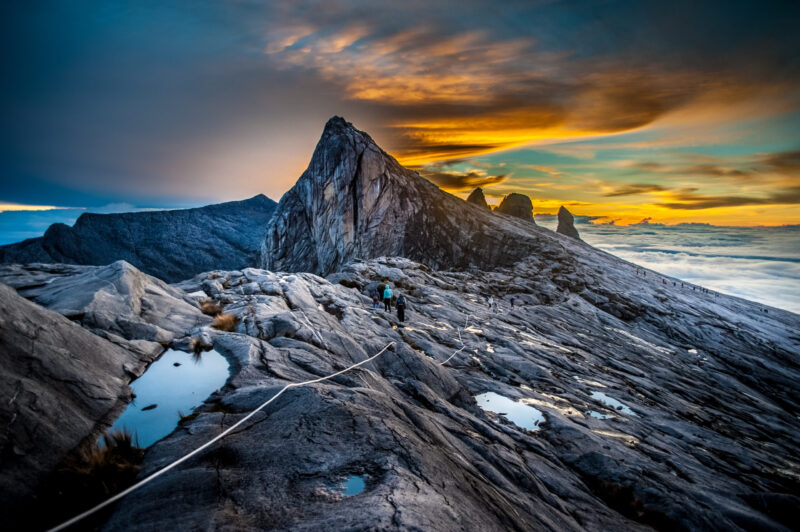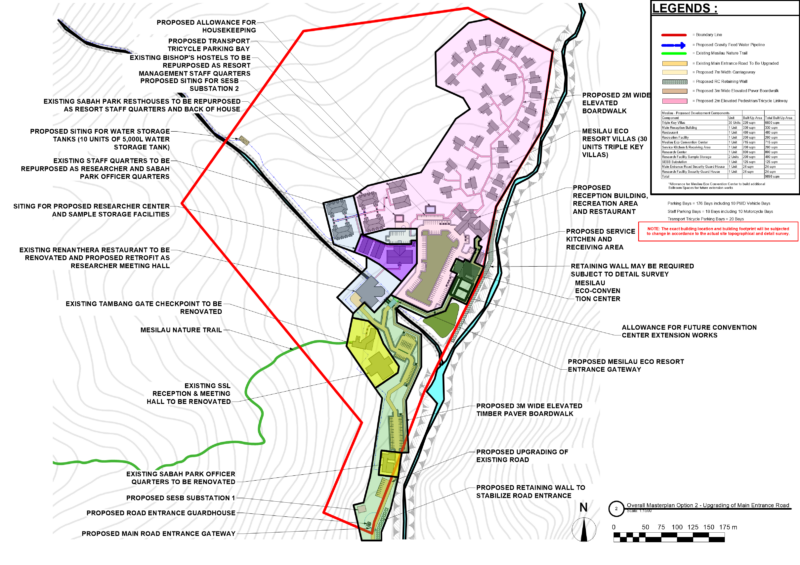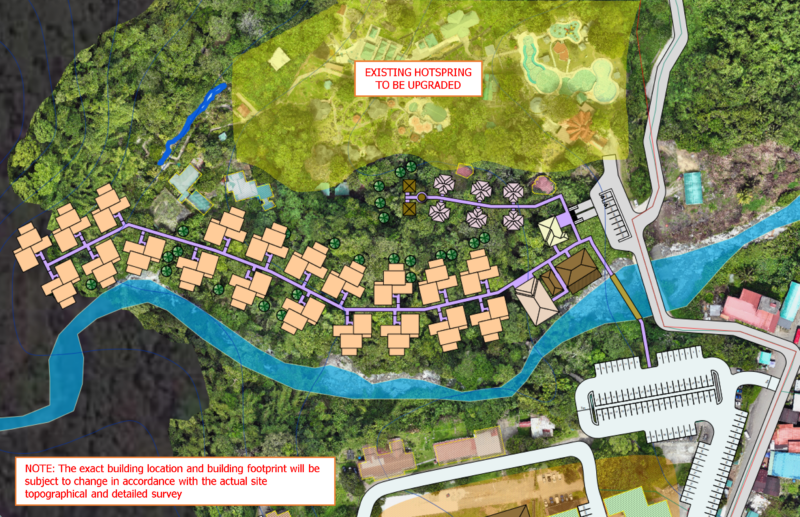
This site
is mobile
responsive

Sabah, located in the northern part of Borneo, is recognised as a premier destination for eco-tourism and cultural heritage. Its diverse landscapes, ranging from tropical rainforests to alpine meadows, host some of the world’s richest biodiversity and are deeply rooted in vibrant indigenous traditions1.
With triple UNESCO recognition for Kinabalu Park, pristine wilderness areas like Danum Valley and Maliau Basin, and immersive cultural experiences, Sabah offers a compelling blend of nature, culture, and adventure. Eco-tourism here is more than leisure; it’s a commitment to conservation, cultural preservation, and community empowerment.
Sabah’s long-term tourism strategy focuses on attracting investors who can strengthen its eco-tourism ecosystem — from eco-lodging and green mobility to digital infrastructure and cultural enterprises. This approach aligns with Malaysia’s national agenda for sustainable, value-driven tourism under Visit Malaysia 2026 (VM2026).
Mount Kinabalu, Southeast Asia’s highest peak at 4,095 metres, anchors Sabah’s eco-tourism appeal. Kinabalu Park holds three UNESCO titles – World Heritage Site, Global Geopark and Biosphere Reserve – recognising its geological, biological, and cultural significance2. Spanning 754 km², the park is home to over 4,500 species, including rare orchids, pitcher plants, and endemic birds3. The mountain is sacred to the Dusun people4, and the park offers climbing expeditions, scenic trails, and educational programmes, making it a global model for conservation-based tourism.
In line with Sabah’s sustainable tourism vision, the Sabah Economic Development and Investment Authority (SEDIA) has undertaken feasibility studies for the redevelopment of two key attractions within Kinabalu Park: Mesilau Resort5 and Poring Hot Spring6.
These initiatives aim to attract private participation, diversify Sabah’s tourism base, and strengthen its position as a high-value, sustainable tourism hub. Both projects prioritise biodiversity conservation, community participation, and long-term economic resilience
The project emphasises low-impact infrastructure, habitat restoration, and sustainable waste management, while empowering local communities through training and employment in hospitality and guiding services.
Financial analysis confirms the project’s long-term sustainability, with both investment options ensuring viability and strong community engagement.
Nestled in the cool highlands, Mesilau Resort offers panoramic views of Mount Kinabalu and unique alpine flora. The redevelopment plan envisions a premier eco-retreat combining guided hikes, nature exploration, and cultural immersion.


Diagram 1: Extracted from the Final Report of the Feasibility Study for the Redevelopment of Tourism in Mesilau, Sabah. Sabah Parks.
Poring Hot Spring is renowned for its sulphur-rich pools, lush rainforest, and biodiversity. Visitors enjoy therapeutic hot springs, canopy walkways, butterfly gardens, and waterfall treks. The redevelopment promotes eco-friendly facility upgrades, cultural integration and community-led programmes to strengthen environment awareness and local participation.
With growing demand for sustainable wellness destinations, Poring is positioned as a regional leader in eco-tourism.
Financial projections indicate solid performance and sustained market demand.


Diagram 2: Extracted from the Final Report of the Feasibility Study for the Redevelopment of Poring Hot Spring, Ranau, Sabah. Sabah Parks.
The redevelopment of Poring and Mesilau demonstrates how eco-tourism projects can be both profitable and sustainable, creating positive spillovers for local Micro, Small, and Medium Enterprises (MSMEs), green supply chains, and cultural enterprises. Enhanced facilities will strengthen Sabah’s eco-tourism network, linking Kinabalu Park with Danum Valley, Maliau Basin, and Tabin Wildlife Reserve – encouraging longer stays and integrated itineraries7.
Between 2021 and 2024, Sabah welcomed approximately 7.85 million tourists, generating over RM16 billion in tourism revenue8. The next phase of growth will hinge on private sector participation across infrastructure, accommodation, renewable energy, logistics, and cultural product development.
Aligned with the Sabah State Government’s tourism growth strategy9, these initiatives pave the way for joint ventures, public-private partnerships, and digital tourism investments that can elevate the overall value chain of Sabah’s tourism industry.
Cultural heritage tourism presents strong growth opportunities. Globally, up to 50% of international travellers engage in cultural activities, with cultural tourism accounting for over 39% of global arrivals10.
Sabah’s vibrant traditions, festivals, and heritage assets offer significant potential for heritage hotels, cultural villages, artisan markets, and community-based tourism clusters11. Initiatives such as the Kaamatan Harvest Festival could be expanded into flagship events that showcase local culture and attract tourism investment12.
Historic towns across Sabah could be transformed into boutique destinations that blend cultural authenticity with modern hospitality – appealing to travellers seeking meaningful and sustainable experiences.
The business events industry further amplifies this potential. Through the Sabah Convention Bureau, cultural festivals and heritage attractions can be showcased at international conferences and exhibitions, thus further attracting global attention and investment13. This integration preserves heritage while positioning Sabah as a sustainable, high-value tourism destination in Southeast Asia.

Sabah’s combination of eco-tourism and cultural heritage presents a compelling proposition for global travellers and investors alike.
The redevelopment of Poring and Mesilau, guided by eco-friendly principles and community engagement, reinforces Sabah’s position as a premier sustainable tourism destination in Southeast Asia.
By linking natural heritage with strategic investment opportunities, Sabah is building a tourism ecosystem that delivers long-term economic growth while safeguarding its unique cultural and environmental identity.
Through sustained partnerships between government, investors, and local communities, Sabah is well on its way to becoming a model of sustainable, high-value tourism development in the region.
Discover investment opportunities at investmentpromotion.sedia.com.my or contact the Investment Promotion Unit at [email protected] or +6088 418 917.
1 https://artsandculture.google.com/story/unesco-sites-in-sabah-malaysia
2 https://www.sabahparks.org.my/kinabalu-park
3 https://www.borneoecotours.com/blog/8-forest-and-nature-wonders-to-explore-in-sabah-malaysian-borneo
4 https://www.witpress.com/Secure/elibrary/papers/SDP15/SDP15078FU1.pdf
5 Final Report. Feasibility Study for the Redevelopment of Tourism in Mesilau, Sabah. Sabah Parks
6 Final Report. Feasibility Study for the Redevelopment of Poring Hot Spring, Ranau, Sabah. Sabah Parks
7 WWF-Malaysia. (2022). Report on linking eco-tourism sites: Danum Valley, Maliau Basin, Tabin Wildlife Reserve, Kinabatangan River
8 https://www.dailyexpress.com.my/news/262174/sabah-generates-over-rm16-billion-under-sabah-
9 www.bizandleisure.com/2021/04/sabah-maju-jaya-smj-development-plan-2021-2025/
10 https://www.e-unwto.org/doi/pdf/10.18111/9789284418978
11 Pan, S., Rasoolimanesh, S. M., & Jaafar, M. (2024). Cultural heritage tourism trends and opportunities in Southeast Asia. Journal of Sustainable Tourism, 32(4), 567–584

Disclaimer: All figures in this article are under the purview of SEDIA and are for informational purposes only. For specific details regarding investments and initiatives, please refer to official SEDIA communications.